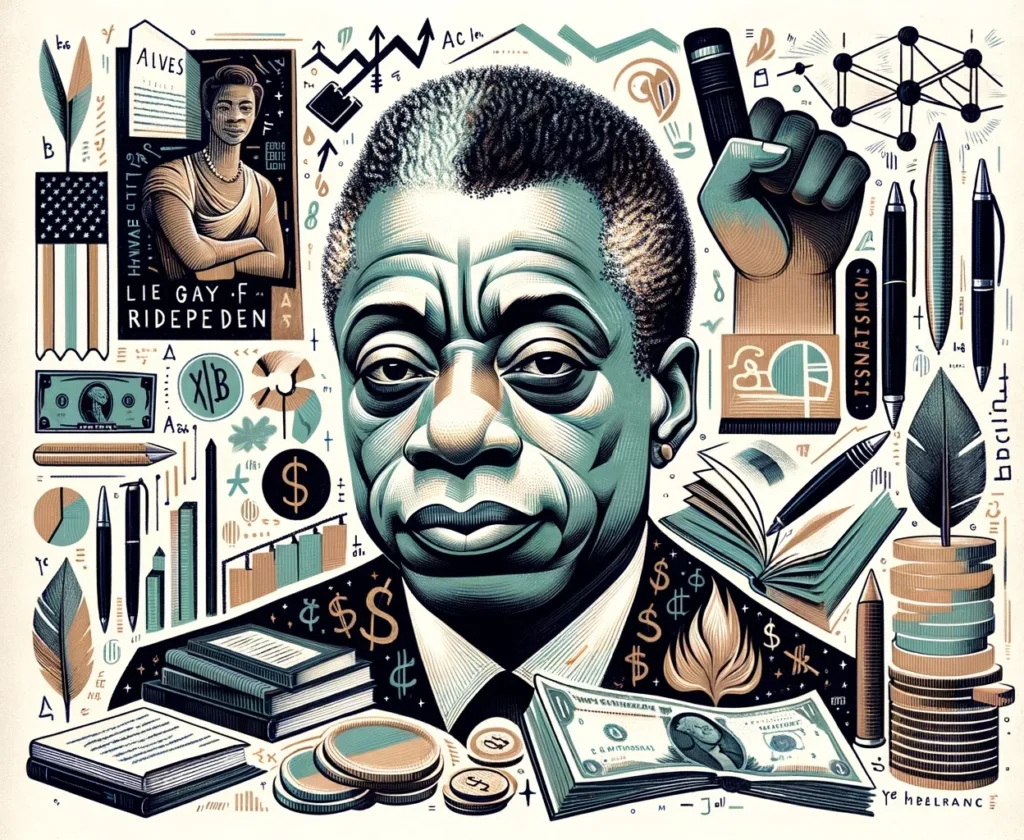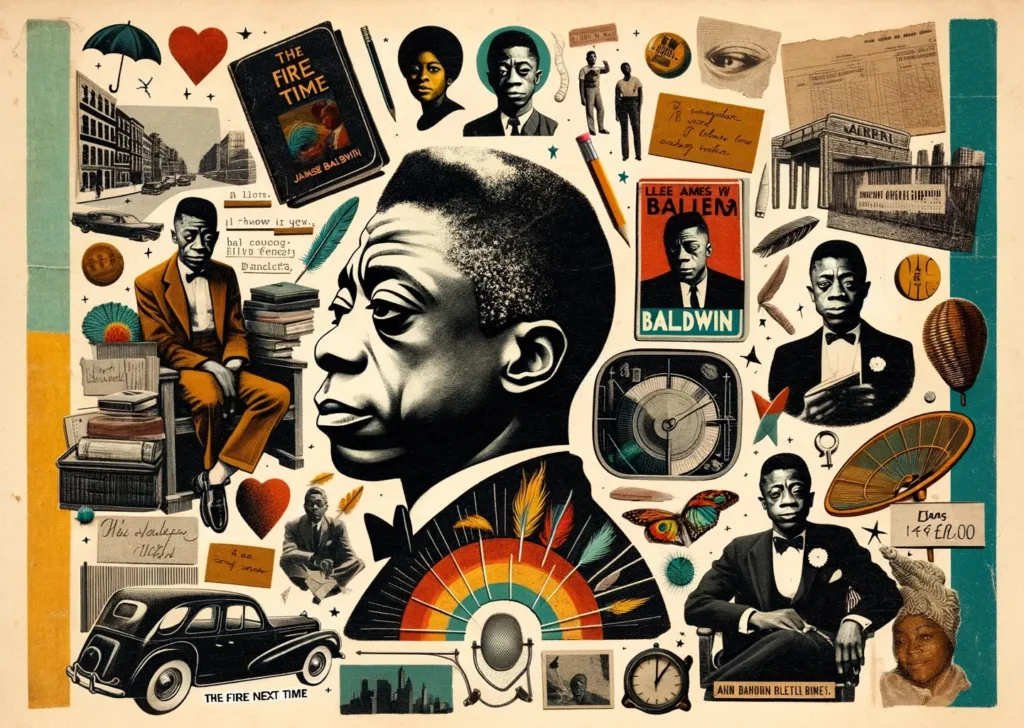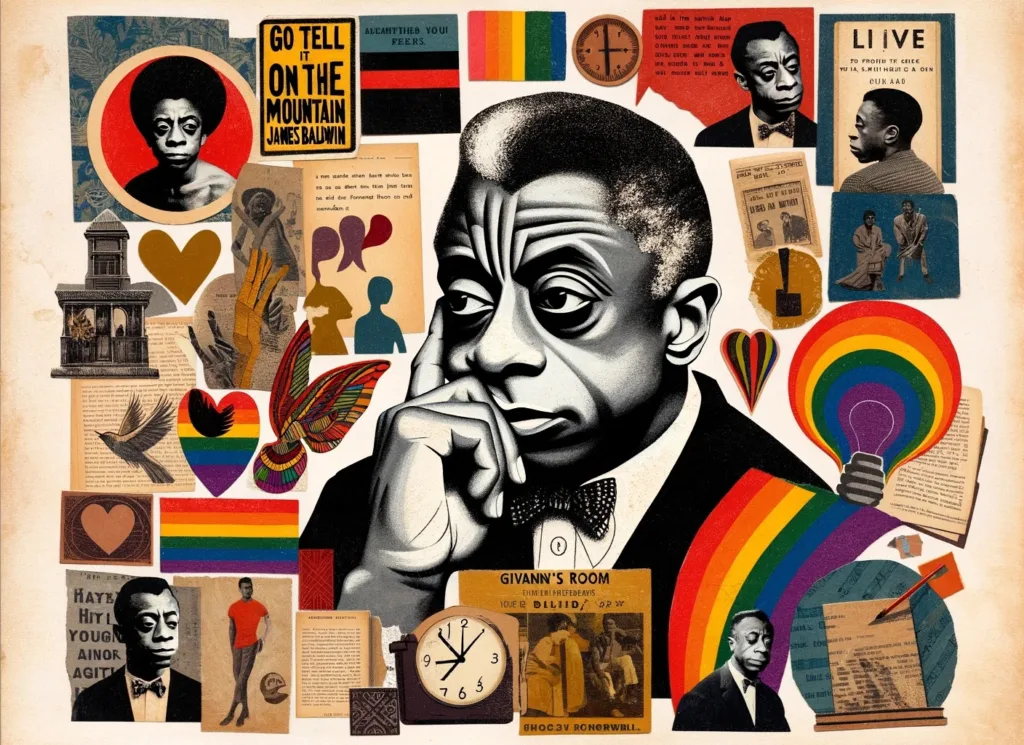In the world of literature and social activism, few figures stand as toweringly significant as James Baldwin. As we commemorate what would have been his 100th birthday, his works and life story continue to resonate powerfully, especially among marginalized communities. I find myself deeply moved and inspired by the life and works of James Baldwin, who would have turned 100 this year. In many ways, Baldwin’s journey mirrors the challenges and triumphs that many of us in the LGBTQ+ community face, and his legacy offers profound insights into the intersection of art, identity, and finance.
James Baldwin’s early life was marked by hardship and struggle, growing up in Harlem during the Great Depression. Despite these challenges, he nurtured a passion for reading and writing, which became his escape and later, his weapon against societal injustices. For artists and creatives struggling financially today, Baldwin’s early resilience serves as a powerful example of how art can be both a refuge and a means of empowerment.

Baldwin’s literary works, including novels like “Go Tell It on the Mountain” and essays like “Notes of a Native Son,” delve deeply into issues of race, sexuality, and identity. These works not only brought to light the struggles of being Black and gay in America but also paved the way for future generations of writers and activists. His legacy in advocating for equality and justice remains a guiding light for those fighting for these causes today.
Baldwin’s journey also speaks to the importance of financial independence for artists. He often had to balance commercial success with his artistic integrity and commitment to social issues. For today’s creatives, this balance remains a crucial aspect of navigating the financial world while staying true to one’s art and activism.
As we remember James Baldwin on his 100th birthday, his life and work continue to inspire and challenge us. For the LGBTQ+ community and beyond, Baldwin’s legacy is a testament to the power of resilience, the importance of financial independence, and the enduring impact of using one’s voice for change. His journey remains a beacon, guiding artists and activists in their quest to make a meaningful impact on society while securing their financial future.
Early Life
As we dive into the life of James Baldwin, it’s crucial to start at the beginning, in the bustling streets of Harlem, New York. Born in 1924, Baldwin’s early years were set against the backdrop of the Harlem Renaissance, a time of great cultural awakening for African Americans, but also a period marked by economic hardship, especially during the Great Depression.
Growing up in poverty, Baldwin quickly learned that the world was not a forgiving place for a young, black, gay man. However, it was in these challenging circumstances that the seeds of his resilience and brilliance were sown. Books became his sanctuary. As Baldwin himself stated, “I knew I was black, of course, but I also knew I was smart. I didn’t know how I would use my mind, or even if I could, but that was the only thing I had to use.” This powerful realization would shape his entire life’s work.

Harlem was not just a physical location for Baldwin; it was a crucible of formation. His experiences there, witnessing firsthand the struggles of those around him, instilled in him a deep understanding of social injustices. This environment fueled his determination to use his voice against racial and sexual oppression. His early essays and short stories were more than just writings; they were reflections of his life and those of the people he grew up with.
Baldwin’s journey to becoming a writer was not a conventional one, especially considering his marginalized identity. He faced rejection, not just from society but sometimes from his own family and peers. Yet, he persevered, using his talent to carve out a space where he could be heard. His early struggles with poverty and identity would later become central themes in his works, resonating with many who faced similar challenges.
This period of Baldwin’s life is a testament to the power of resilience and the strength found in embracing one’s identity. His ability to turn adversities into a source of inspiration is a vital lesson for anyone facing financial or personal struggles. Baldwin’s early years remind us that our beginnings, no matter how humble or difficult, do not define our potential. Instead, they can be the very fuel that propels us to greatness.
For creatives and artists today, especially those from marginalized communities, Baldwin’s story is a beacon of hope. It shows that with determination and the courage to use one’s voice, it is possible to rise above circumstances and make an indelible mark on the world.
Voice Crying In The Wilderness
James Baldwin was not just a writer; he was a visionary whose works transcended the pages they were written on, becoming a loudspeaker for the marginalized and a mirror for society. His literary journey was a bold crusade against racial injustice and an exploration of complex human identities, especially concerning sexuality and race.
Baldwin’s first novel, “Go Tell It on the Mountain” (1953), is an autobiographical account that delves into the depths of his early life in Harlem. This novel is not just a story; it’s a revelation of Baldwin’s struggles with his identity, both racial and sexual, within the constraints of a deeply religious community. The book, with its raw honesty and emotional depth, immediately established Baldwin as a powerful voice in American literature.
Then came “Giovanni’s Room” (1956), a novel that broke ground on the topic of homosexuality, a taboo subject at the time. Baldwin’s decision to write about a gay relationship between an American man and an Italian bartender was revolutionary. The novel, set in Paris, was a stark departure from his previous work, showcasing Baldwin’s versatility and fearlessness as a writer. “Giovanni’s Room” was more than a novel; it was a bold statement on the universality of love and the pain of its denial.

Baldwin’s essays, collected in “Notes of a Native Son” (1955), are a profound exploration of the African American experience. They dissect the complex dynamics of race in America with an incisiveness and eloquence that remain unparalleled. Baldwin’s ability to articulate the Black experience in America, with all its pain, rage, and hope, made him not just a writer but a spokesperson for a generation.
Perhaps one of his most significant works, “The Fire Next Time” (1963), a collection of two essays, is an unflinching analysis of race relations in the United States. This book arrived at a critical time in American history, amidst the Civil Rights Movement, and its impact was monumental. Baldwin’s prophetic words, “Do I really want to be integrated into a burning house?” continue to echo as a powerful metaphor for racial justice and the American dream.
Baldwin’s works were not just literary achievements; they were societal catalysts. He had the courage to confront uncomfortable truths about race, sexuality, and identity, challenging both Black and white audiences. His writings sparked conversations, opened minds, and, most importantly, inspired change. They served as a beacon of understanding and empathy in a world often divided by ignorance and prejudice.
Baldwin’s legacy in literature and social activism is epic not only because of the beauty of his prose but because of the depth of his insight into the human condition. He provided a voice for the voiceless and held up a mirror to society, demanding a reckoning with its deepest flaws.
Financial Independence and Artistic Integrity
James Baldwin’s journey was not just one of literary and social triumphs, but also a relentless quest for financial independence and artistic integrity. His path illuminates the often challenging balance between financial security and staying true to one’s creative and ethical principles, a struggle that resonates with many artists and creatives today.
In an era when authors of color faced significant barriers, Baldwin’s ascent to financial stability was a feat in itself. He managed to navigate a publishing industry that was predominantly white and often resistant to the raw truths he presented. Baldwin’s works, while critically acclaimed, were not immediately lucrative. Yet, he persisted, driven by the belief that his voice, his perspective, needed to be heard.
Baldwin’s financial journey was a tightrope walk between commercial success and maintaining the integrity of his message. He often had to make tough decisions, choosing projects that aligned with his values over those that promised greater financial rewards. For Baldwin, the act of writing was more than a profession; it was a form of activism, a means to fight against the systemic injustices he so eloquently decried in his writings.
His decision to live in France for much of his adult life was, in part, a strategic move for financial and personal freedom. In France, Baldwin found a space where he could write more freely, away from the direct pressures and prejudices of American society. This move was not just geographical; it was a strategic step towards creating a life where he could write without compromise.
Baldwin’s financial independence was closely linked to his artistic output. He knew that to speak truthfully, he had to be financially secure, free from the constraints that might compel him to alter his message. He understood the power that financial freedom could bring to an artist, especially one dedicated to challenging societal norms.
Today, Baldwin’s approach to balancing financial needs with artistic integrity serves as an invaluable model for creatives. In a world where commercial success is often the most prominent measure of worth, Baldwin’s life reminds us of the importance of staying true to one’s artistic vision and ethical values. His legacy teaches us that financial independence is not just about wealth accumulation; it’s about creating the freedom to express oneself fully and truthfully.
As we conclude this exploration of James Baldwin’s life and work, we are reminded of the enduring impact of his literary genius and his commitment to truth, justice, and artistic integrity. Baldwin’s story is a beacon for artists and activists, illuminating a path of resilience, courage, and unwavering commitment to one’s principles, even in the face of financial challenges.
A Guide to His Timeless Works
As we reflect on the remarkable life and enduring legacy of James Baldwin, it becomes clear that his contributions to literature, social activism, and the ongoing dialogue about race, sexuality, and identity are as relevant today as they were during his lifetime. Baldwin’s journey, marked by relentless pursuit of truth and unwavering artistic integrity, offers not only inspiration but also practical lessons for contemporary artists, activists, and anyone navigating the complexities of personal identity and societal expectations.
To truly embrace and understand Baldwin’s legacy, one must engage with his works. Here is a curated list of essential readings that offer a window into his brilliant mind and the profound impact of his words:
- “Go Tell It on the Mountain”: Baldwin’s semi-autobiographical novel is a must-read for anyone seeking to understand the complexities of family, faith, and the search for identity against the backdrop of Harlem in the early 20th century.
- “Giovanni’s Room”: This groundbreaking novel delves into themes of sexuality, identity, and societal norms, offering a poignant exploration of love and the consequences of denying one’s true self.
- “Notes of a Native Son”: This collection of essays is a masterful commentary on race in America, blending personal narrative with societal analysis, showcasing Baldwin’s prowess as both a storyteller and a social critic.
- “The Fire Next Time”: Comprising two powerful essays, this book is a profound exploration of the intersection of race, religion, and empowerment, and is a critical read for understanding Baldwin’s views on civil rights and racial justice.
- “If Beale Street Could Talk”: A beautiful yet heart-wrenching novel that explores love and injustice in America, this story of a young couple’s fight against false accusation is as moving as it is timely.
James Baldwin’s works are not just writings; they are conversations that continue to resonate, challenge, and inspire. As we commemorate his 100th year, delving into these works is more than a literary exploration – it is an act of engaging with the very issues that define our society. Baldwin’s voice, a blend of poetic grace and unflinching honesty, remains a guiding light in our collective journey towards a more just and empathetic world.
Baldwin’s legacy is not confined to the past; it is a living, breathing inspiration that continues to influence and empower. By engaging with his works, we honor his memory and continue the vital conversations he started. Let us carry forward Baldwin’s legacy in our own pursuits of truth, justice, and artistic expression.


